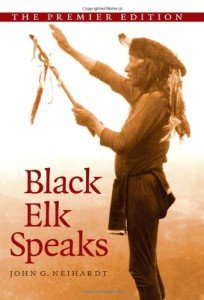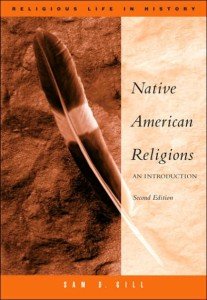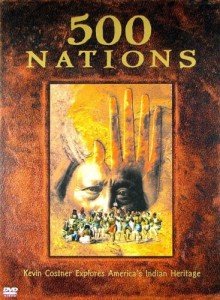A Sacred Echo:
Exploring the Multifaceted Legacy of Black Elk in
The Black Elk Reader
Clyde Holler's 2000 The Black Elk Reader is not merely a collection of texts; it's a carefully curated excavation of the complex legacy of Nicholas Black Elk, the Oglala Lakota holy man whose life story, famously recounted in John G. Neihardt's Black Elk Speaks, continues to captivate and provoke debate. While Neihardt's version remains undeniably influential, Holler's compilation offers a corrective lens, presenting diverse perspectives that contextualize his life, beliefs, and enduring impact. This approach yields a rich tapestry, challenging simplistic interpretations and revealing the multifaceted nature of both Black Elk and the historical forces that shaped him.
The brilliance of The Black Elk Reader lies in its strategic organization. Holler masterfully avoids presenting a monolithic portrait of Black Elk, instead constructing a narrative arc that reveals the evolving understanding of the man and his message. The book acknowledges Neihardt's significant contribution while also highlighting his influence on shaping Black Elk's narrative. This process involved both collaboration and artistic license. Holler doesn't shy away from pointing out the power dynamics at play, emphasizing Neihardt's position as a white author interpreting the experiences of a Native American spiritual leader.
The subsequent sections unfold with a meticulous balance, integrating anthropological accounts, historical documents, and critical essays. This interweaving of sources is crucial for understanding the complexities of Black Elk's life. We see him not just as the visionary recounted in Black Elk Speaks but as a complex figure navigating a rapidly changing world, grappling with the devastating effects of colonization, and striving to maintain his spiritual integrity amidst profound loss and upheaval.
The inclusion of anthropological accounts provides invaluable context. These excerpts offer a deeper understanding of Lakota spirituality, the intricacies of the Ghost Dance movement, and the social and political structures within which Black Elk lived and operated. This contextualization is crucial in challenging the romanticized image of Black Elk often presented in popular culture. We encounter a man deeply rooted in his community, engaged in the day-to-day struggles of survival, and acutely aware of the injustices inflicted upon his people.
Furthermore, the incorporation of critical essays adds another layer of sophistication. These pieces critically examine Neihardt's work, questioning its authenticity and analyzing its literary and historical significance. They also delve into the ongoing debate surrounding the representation of Native American cultures, raising vital questions about cultural appropriation, authorship, and the ethics of interpreting indigenous narratives. These critical reflections are not merely academic exercises; they are essential to understanding the ongoing legacy of Black Elk Speaks and its impact on the broader reception of Indigenous voices.
However, the book is not without its limitations. The sheer volume of material, while enriching, can occasionally feel overwhelming. The diverse sources, although expertly interwoven, sometimes require a significant amount of prior knowledge to fully appreciate their nuances. Furthermore, while Holler makes a commendable effort to present a balanced perspective, the inherent challenges of interpreting historical events through fragmented sources inevitably leave some questions unanswered.
Despite these minor shortcomings, The Black Elk Reader remains an indispensable contribution to Native American Studies and the broader field of American literary history. It is a testament to Holler's scholarly rigor and his commitment to presenting a nuanced and multifaceted portrait of Black Elk. By challenging simplistic narratives and inviting a critical engagement with the past, Holler's compilation not only reveals the enduring spiritual power of Black Elk's vision but also underscores the ongoing importance of listening to, understanding, and respecting Indigenous voices. This is a book to be studied, pondered, and returned to again and again, a sacred echo resonating with the wisdom and resilience of a remarkable life. It is a crucial text for anyone seeking a deeper understanding of Black Elk, Lakota spirituality, and the complexities of the American West.
The following is a list of the essays included in the volume:
- · Black Elk passes on the power of the Earth: Black Elk's purpose and use of Lakota literary tradition in creating Black Elk Speaks by Ruth J. Heflin
- Speaking through others: Black Elk Speaks as testimonial literature by R. Todd Wise
- Black Elk's significance in American culture by Amanda Porterfield
- Akicita of the thunder: horses in Black Elk's vision by Julian Rice
- John Neihardt and Black Elk Speaks: a personal reminiscence by George W. Linden
- Black Elk and John G. Neihardt by Hilda Neihardt and R. Todd Wise
- A retrospective on Black Elk: holy man of the Oglala by Michael F. Steltenkamp
- A postcolonial reading of Black Elk by Dale Stover
- Just what is cultural appropriation, anyway? The Ethics of reading Black Elk Speaks by Frances W. Kaye
- Inipi, the purification rite (sweat lodge), and Black Elk's account in The Sacred Pipe by Gregory P. Fields
- Black Elk and the spiritual significance of Paha sapa (the Black Hills) by Alexandra Witkin-New Holy
- Dakota philosophy by George W. Linden
- The great vision of Black Elk as literary ritual by R. Todd Wise
- The new missiology and Black Elk's individuation by Paul B. Steinmetz
- Black Elk and the Jesuits by Ross Enochs
- Sources and suggestions for further study of Black Elk and Lakota culture by Raymond A. Bucko






